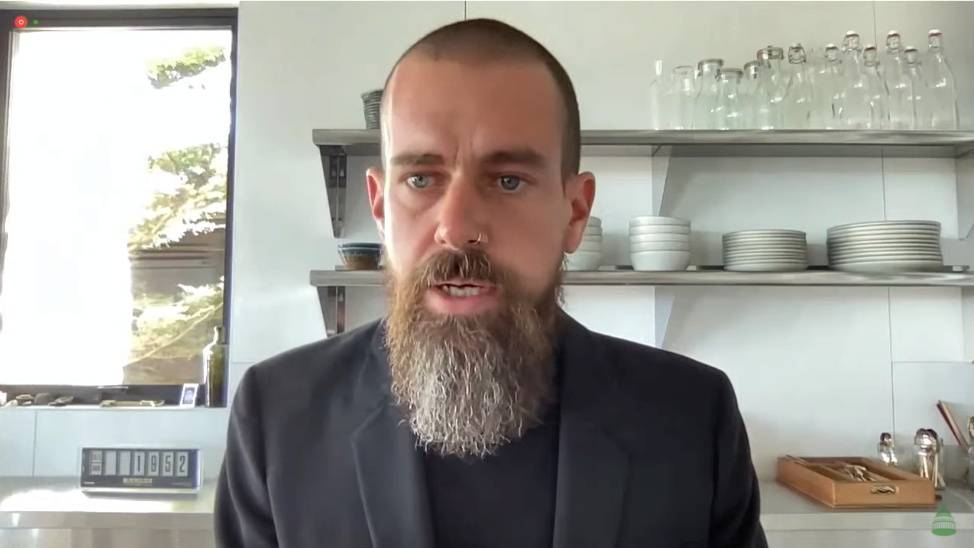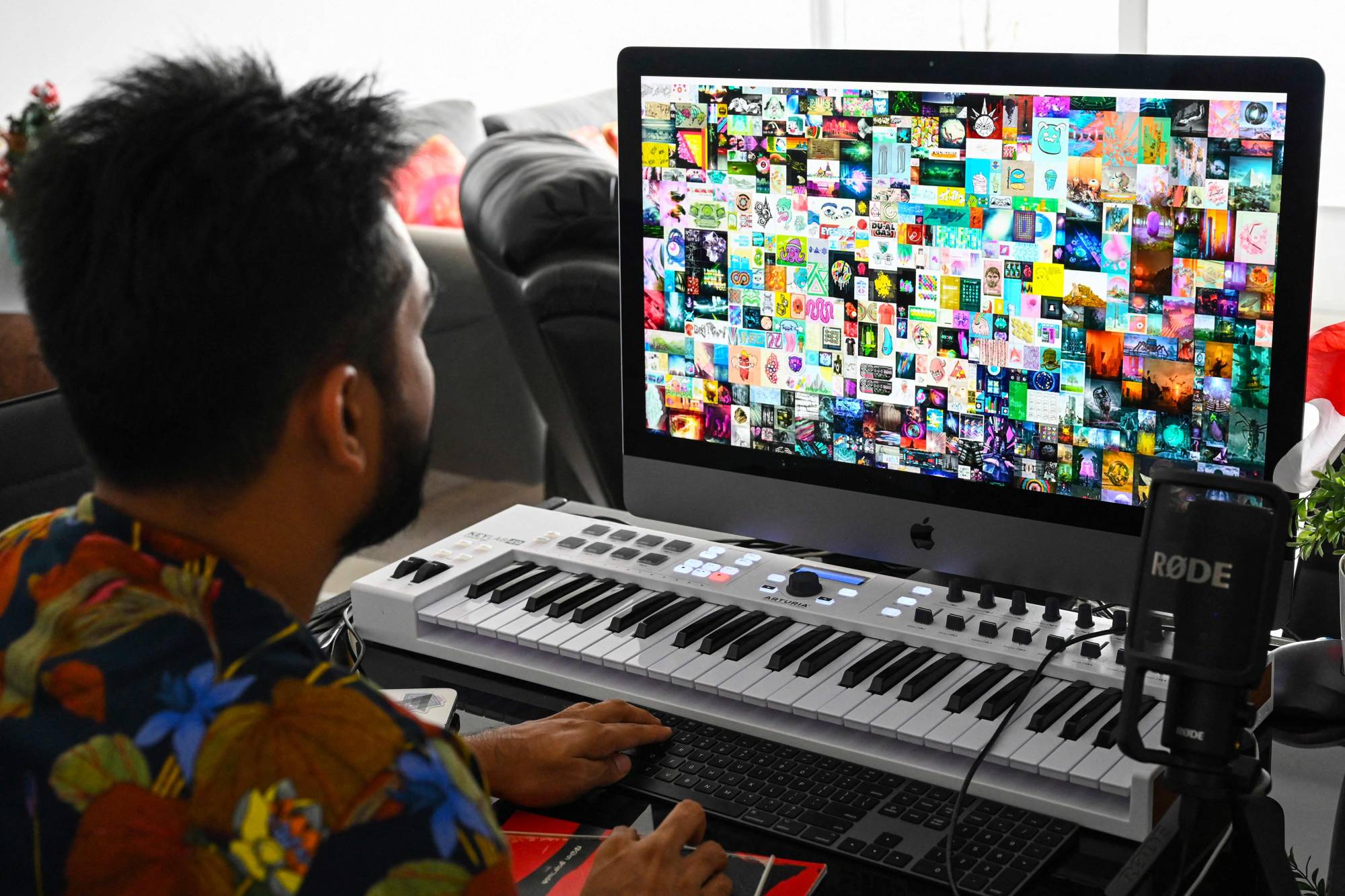Over the past several months, non-fungible tokens, or NFTs, have rapidly evolved to be a phenomenon in the world of crypto assets, where things often tend to be something of a rollercoaster ride.
With digital items ranging from a tweet to art works sold for staggering sums — sometimes millions of dollars — a good number of people may be thinking that this is set to be another one of those turbulent rides.
The latest figures suggest that the bubble may have already burst, as weekly NFT sales have plummeted by more than 90% compared with their peak in early May.
Yet the hype is still swelling among business players, artists and entertainers, including those in Japan, as they are paying attention to the trend with interest, saying NFTs could create a new kind of digital economy. And given that Japan boasts internationally successful pop culture, anime and manga for example, many believe that the country has great potential to drive the NFT movement forward.
But reservations also exist, with experts pointing to legal uncertainties and risks.
Growing interest
Mai Fujimoto, who is known as “Miss Bitcoin” due to her activity as a cryptocurrency evangelist, says she’s had a hectic schedule recently due to numerous meetings with people interested in the hot crypto trend.
“The cryptocurrency industry has seen several bubbles, but I’ve never been this busy,” said Fujimoto, who heads Tokyo-based startup Gracone, which offers consulting services on crypto assets and blockchains, the ledgers that record cryptocurrency transactions.
From artists to publishers and tech companies, Fujimoto has been meeting with many different types of people wanting to get information on NFTs.
The Japanese NFT market is not as vibrant as its counterpart in the U.S. yet, as Japan is still in an early phase of its development, but behind the scenes, there has already been a battle among businesses to team up with popular intellectual-property holders, Fujimoto said.
Some prominent businesses have launched NFT marketplaces or announced their intention to do so in the past few months.
Coincheck Inc., one of Japan’s major cryptocurrency exchange operators, introduced its NFT marketplace in March.
“There are quite a lot of people who want to make NFT goods but they don’t know what to do. We thought we could help them,” said Yusuke Otsuka, executive and co-founder of Coincheck.
Japan has a rich culture of content including manga and anime that could be turned into digital tokens, so “I think those assets work very well with NFTs,” said Otsuka.
“Some publishers have come to us and said they want to take advantage of their sleeping assets.”
Another tech firm, Mercari Inc., the operator of Japan’s largest flea market app, said in April that it would make a foray into the NFT business as well.
Building blocks
NFTs are digital assets that essentially work as certificates for digital items.
“Before the arrival of blockchain technology, it was impossible to produce non-fungible digital items, since you could easily make exact copies,” said Pina Hirano, who heads the Blockchain Collaborative Consortium, a Tokyo-based organization promoting the use of blockchain.
“NFTs are able to issue something similar to copyright or ownership for digital works,” which can facilitate the development of new digital markets, he said.

This is possible because NFTs run on blockchain technology, which is the backbone of cryptocurrencies. The blockchain works over a peer-to-peer network that links people’s computers directly without the use of a central server and records each transaction from the start. The system is mutually and simultaneously monitored by individuals or organizations called miners, who use their computing power to verify transactions and make falsification effectively impossible.
Cryptocurrencies and NFTs are very similar because they are both digital tokens, but the critical difference is whether they are fungible or not.
Let’s say you own 1 bitcoin and swap it with another person’s. Nothing really changes because the value of each bitcoin is the same. But with NFTs, each token is different, so it’s similar to how you can’t swap your driver’s license with your friend’s even though they are, in essence, the same thing.
Using this NFT technology, it is possible to tokenize pretty much any digital work to indicate its authenticity. As a result, NFTs can add an element of scarcity to digital creations.
Bubble or game-changer?
High-profile NFT sales have hit the headlines over the past several months.
The most notable instance came in March when artist Mike Winkelmann, better known as Beeple, sold a work of digital art for $69 million to a cryptocurrency investor.
The NFT investment heat seems to have simmered down for now, as weekly sales of NFT items have plunged from over $175 million in early May to about $10 million, according to NonFungible.com, which provides NFT market data.
Some people have said that the soaring prices of a slew of NFTs indicate a bubble, which may have ended with the sales plunge, while others say that NFTs are the next big thing and will spawn a new ecosystem for digital items.
“Because of NFTs, it is possible to add value to digitally produced items now. There is no going back on this,” Gracone’s Fujimoto said.
Some Japanese artists have already shown interest in the potential of NFTs.
“I am not sure whether NFTs will really take root, but NFTs are renewing values that didn’t exist in the past … that’s something art is capable of,” said Tomokazu Matsuyama, a contemporary artist based in New York.
Matsuyama, who attended a preview event for his new exhibition in Tokyo last month, brought up the example of Andy Warhol’s unconventional use of screen printing in the 1960s, which helped legitimize and popularize the technique in artistic contexts.
“What he was doing is no different from NFTs. The history of art is about artists producing work that was denied in the previous era but has the power to convince people that it is something new,” he said, adding that he expects some artists will make a name for themselves through NFTs.
Creators who have already jumped on the NFT bandwagon include Aimi Sekiguchi, a VR artist who caught media attention when she sold her NFT virtual reality work for ¥13 million in March.
Renowned contemporary artist Takashi Murakami launched an NFT auction for his work in April but canceled it, saying that he wants to think further about “the optimal format” through which to present his NFT art.
“Through the preparations and discussions so far, I have become even more convinced of the great potential of NFT, and I am excited anew to work on NFT digital art,” Murakami said in an Instagram post.
At the same time, Fujimoto, who has run NFT art charity auctions, said some Japanese artists are hesitant due to the possible environmental impact of NFTs.



Many NFTs are produced using the Ethereum blockchain, which requires a massive amount of computing power to sustain the system.
Bitcoin, whose blockchain system also consumes a lot of power, is often seen as a menace to the environment, and this was cited by Tesla Inc. chief Elon Musk as the reason why the automaker recently stopped accepting bitcoin as payment.
Uncertain ownership
Despite the growing interest, NFTs will likely have to overcome some hurdles to become a pervasive asset.
They are still a bit too technical for casual use for those who aren’t cryptocurrency enthusiasts, Fujimoto said, adding that installing and managing cryptocurrency wallet services, for instance, is tough for such users.
“Improving usability for general users is a challenge,” she said.
In addition, some legal experts point out the uncertainty that still surrounds NFT ownership.
“If it’s a physical painting, you know you own it,” said So Saito, the lawyer who heads So & Sato Law Offices in Tokyo.
“But with Beeple’s NFT art, anybody can look at it on the internet by just clicking a link. … It’s often unclear what those who have purchased NFTs really own. Yet they have been sold for such high prices.”
Saito also said lawmakers are well advised to begin a discussion regarding the ownership of digital items, since the law currently does not cover it.
“Ownership in the Civic Code applies only to something material,” Saito said. “Even if (NFTs) are able to confirm who owns this data, it is still unclear what kinds of rights they have according to the Civic Code, as the law is not designed to rule on such a situation.”
For instance, if companies that have issued and sold NFT digital products go under, it’s legally uncertain how NFT owners would be protected.
Hirano of the Blockchain Collaborative Consortium said that while he believes NFTs will be a game-changer in the long run, he warned that they “will face a few bumps,” just as cryptocurrencies have undergone some tough times.
“We believe that there will be NFT fraud cases and hacking incidents … pretty much all the things that cryptocurrencies have experienced will happen to NFTs,” Hirano said.
He added that the NFT industry will likely see healthy growth after going through such ordeals.
“There will be victims of such events. It will be necessary to think about how they can be protected beforehand,” Hirano said.
In a time of both misinformation and too much information, quality journalism is more crucial than ever.
By subscribing, you can help us get the story right.
SUBSCRIBE NOW


